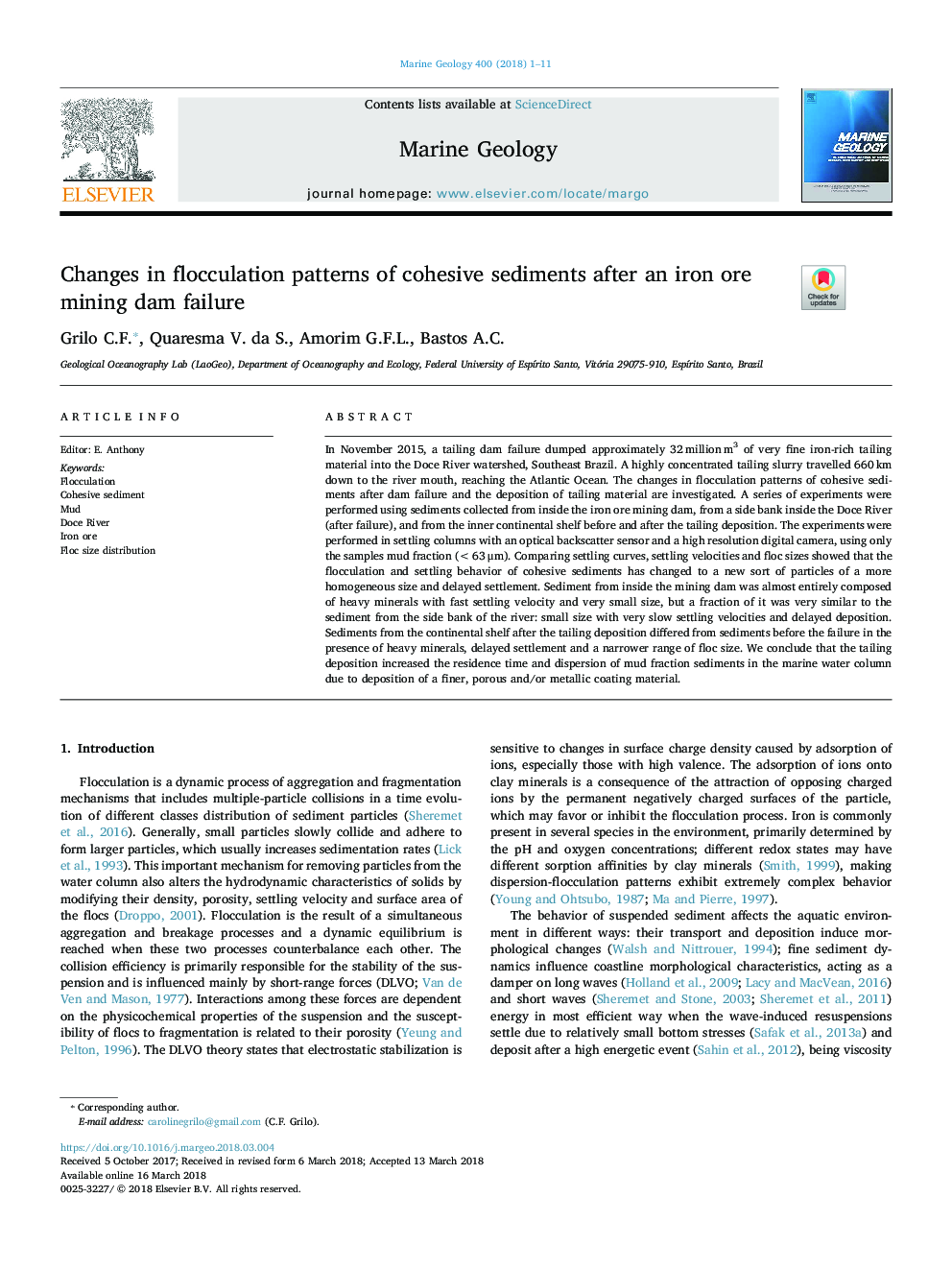| Article ID | Journal | Published Year | Pages | File Type |
|---|---|---|---|---|
| 8911970 | Marine Geology | 2018 | 11 Pages |
Abstract
In November 2015, a tailing dam failure dumped approximately 32â¯millionâ¯m3 of very fine iron-rich tailing material into the Doce River watershed, Southeast Brazil. A highly concentrated tailing slurry travelled 660â¯km down to the river mouth, reaching the Atlantic Ocean. The changes in flocculation patterns of cohesive sediments after dam failure and the deposition of tailing material are investigated. A series of experiments were performed using sediments collected from inside the iron ore mining dam, from a side bank inside the Doce River (after failure), and from the inner continental shelf before and after the tailing deposition. The experiments were performed in settling columns with an optical backscatter sensor and a high resolution digital camera, using only the samples mud fraction (<63â¯Î¼m). Comparing settling curves, settling velocities and floc sizes showed that the flocculation and settling behavior of cohesive sediments has changed to a new sort of particles of a more homogeneous size and delayed settlement. Sediment from inside the mining dam was almost entirely composed of heavy minerals with fast settling velocity and very small size, but a fraction of it was very similar to the sediment from the side bank of the river: small size with very slow settling velocities and delayed deposition. Sediments from the continental shelf after the tailing deposition differed from sediments before the failure in the presence of heavy minerals, delayed settlement and a narrower range of floc size. We conclude that the tailing deposition increased the residence time and dispersion of mud fraction sediments in the marine water column due to deposition of a finer, porous and/or metallic coating material.
Related Topics
Physical Sciences and Engineering
Earth and Planetary Sciences
Geochemistry and Petrology
Authors
Grilo C.F., Quaresma V. da S., Amorim G.F.L., Bastos A.C.,
